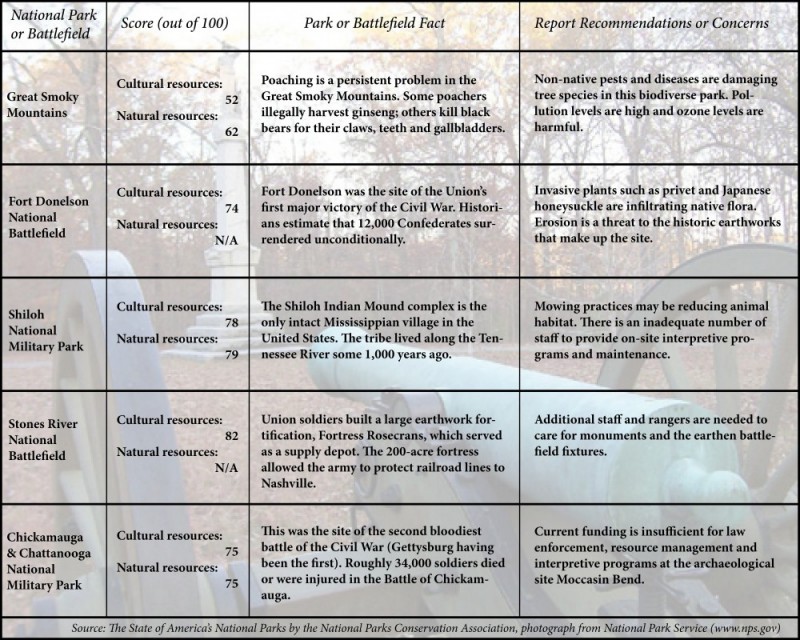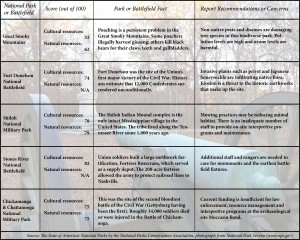WASHINGTON – If you are thinking of heading to one of central Tennessee’s national parks this summer, you might want to choose a historic battlefield instead of the Great Smoky Mountains.
On June 28, the National Parks Conservation Association released its 10-year evaluation of the 80 national parks in the United States. Tom Kiernan, president of the NPCA, announced that the park system – often called “America’s best idea” — was not in the greatest of health.
Of the 80 parks, 66 percent received a fair rating for natural resources, which indicates partial degradation and vulnerability. Only about 10 percent of the parks were rated good to excellent for their natural resources. The report gave an overwhelming 91 percent of the parks a fair or poor rating for cultural resources.
Tennessee’s historic Civil War battlefields, like most of the national parks, ranked fair in cultural conditions, but the Great Smoky Mountains national park had poor cultural resources and endangered natural resources.
Stones River National Battlefield received an excellent rating for its history program and museum archives, but the report emphasized the need for additional maintenance staff and rangers. The large earthen remnants of fortifications face erosion and monuments need upkeep.
“We do well with what we have,” said park ranger Gib Backlund, noting that the park’s small size lets it get by with 11 permanent staff members.
The report said that, as with most parks in the national system, encroaching development and invasive species are altering the feel of the land at Stones River. It is difficult to envision a 19th century battlefield when a parking lot sits on the horizon or invasive plants such as bush honeysuckle creep between the trees, the report said.
Backlund acknowledge the problem, but said his staff tries to get rid of the invasive plants and insects.
“We try to remove them to help people visualize what the battlefield would have looked like at the time of the Civil War,” Backlund said.
Other problems facing national parks include inadequate law enforcement, pollution, species loss and insufficient maintenance.
The Great Smoky Mountains faced all of those problems, according to its 2004 assessment. Nevertheless, 94 percent of respondents in a 2008 survey conducted by the park said it provided good or very good services, facilities and recreational activities.
While conservationists at the park are working to combat invasive pests, the persistent problems of dangerous ozone levels, air pollution that can reduce visibility by up to 80 percent, and mercury deposits are largely beyond the park’s control, said Bob Miller, spokesman for the Great Smoky Mountains.
Miller said the Tennessee Valley Authority has agreed to reduce emissions and close down dirty power plants, both primary sources of pollution in the park.
“The jury’s out on when the forests will recover to what they were like 15 years ago,” Miller said. “It could take centuries.”
Kiernan and James Nations, head of the Center for Park Research, urged Congress to fund the $600 million shortfall that national parks need and to implement a five-year funding plan.
“National parks are an economic investment,” he said, noting that every dollar invested in parks yields at least a $4 return.


